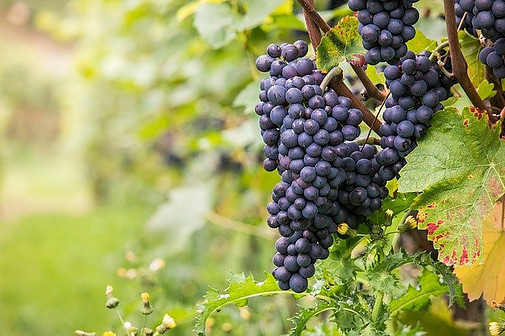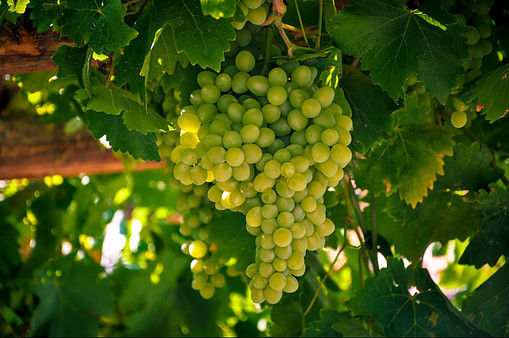The grape variety’s correct choice is significant because the final quality of sparkling wines depends on it. But which are the main grapevine varieties for sparkling wine? The most commonly used are less aromatic varieties with higher total acidity and lower sugar content, which depends on ecological conditions. The main varieties for the production of sparkling wines in the Champagne area are Chardonnay, Pinot Noir, and Pinot Meunier, which are vinified according to the technology common to white wines. In Slovenia, sparkling wines are most often produced from autochthonous varieties of Istrian white Malvasia (Istria), Chardonnay, Rebula, and Teran and from a mixture of different varieties.
Red Grape Varieties for Sparkling Wine
Pinot Noir
Pinot Noir, or Blue Burgundy, or Pinot Noir in French, is a red variety of wine. This variety originates from France, namely from the Burgundy region.
Pinot Noir is difficult to adapt to natural conditions. The lack of sun in Pinot Noir is expressed in an indistinct burgundy character, which has no smell of red fruit, and the tannins do not act softly. However, in hot areas with a lot of sun exposure, the wine is too colored and too heavy. Pinot Noir, therefore, achieves sufficient maturity only in the best positions.
It thrives best in warm hilly positions in stronger soils with more moisture. It gives the best wine in stony, calcareous, dry soils, but at the expense of quantity. It is medium lush, of regular and relatively low nature, but excellent quality. It ripens in the first period. It gives the noblest continental red wine, beautiful dark red color, high alcohol content with little acidity, and a special typical varietal aroma and taste. For sparkling wine, it is used as a white wine that gives strength and weight to blends and helps the sparkling wine to mature successfully.
Pinot Meunier
A very early variety that is supposed to be a black Pinot mutant. It originates from France, the province of Burgundy, where it is still the most widespread today. It is still widespread in Australia and New Zealand. It achieves good results in lighter and warmer soils in conditions of temperate oceanic and continental climates in good positions. Fertilization is regular and good. It ripens at the end of the first or the beginning of the second period. The variety is similar to all Pinots in its growth characteristics. Fertility is regular and varies depending on the location and breeding system. Very sensitive to gray mold. It shows very high resistance to low winter temperatures. It has a slightly better yield than the Pinot Noir, which is slightly worse in quality.
White Grape Varieties for Sparkling Wine
Chardonnay
Variety originating in France. It has long been identified with the Pinot Noir cultivar, but research has shown that these are two different cultivars. Chardonnay is a spontaneous cross between Pinot (most likely black) and the Gaulois Blanc variety (Weisser Heunisch). It ripens in the second period. Yield is moderate to very good and varies from 6 to 12 t / ha. It regularly accumulates 2-3% more sugar than Pinot Noir, and the total acid content is equal. Chardonnay wine is light yellowish, greenish, wonderful, nicely developed aromas, characteristic of the cultivar, high in alcohol and medium acids. The nutmeg clone has a pleasant, non-accentuated nutmeg scent.
Chardonnay creates very different wines in different climatic conditions. Cold Chardonnay from the cold Burgundy region of Chablis is thus very different from Chardonnay from warm California. The cold climate gives it flavors of apples, citrus, and pears, and sometimes even cucumbers, while the warm climate gives it tropical fruits such as peach, banana, pineapple, and mango. Secondary flavors in Chardonnay, which are formed in the cellar (malolactic fermentation), are butter and cream. When aged in oak barrels, we also get tertiary flavors such as toast, bread, vanilla, and coconut. Chardonnay is thus obviously a very complex wine, and it all depends on the climate and the winemaker.
